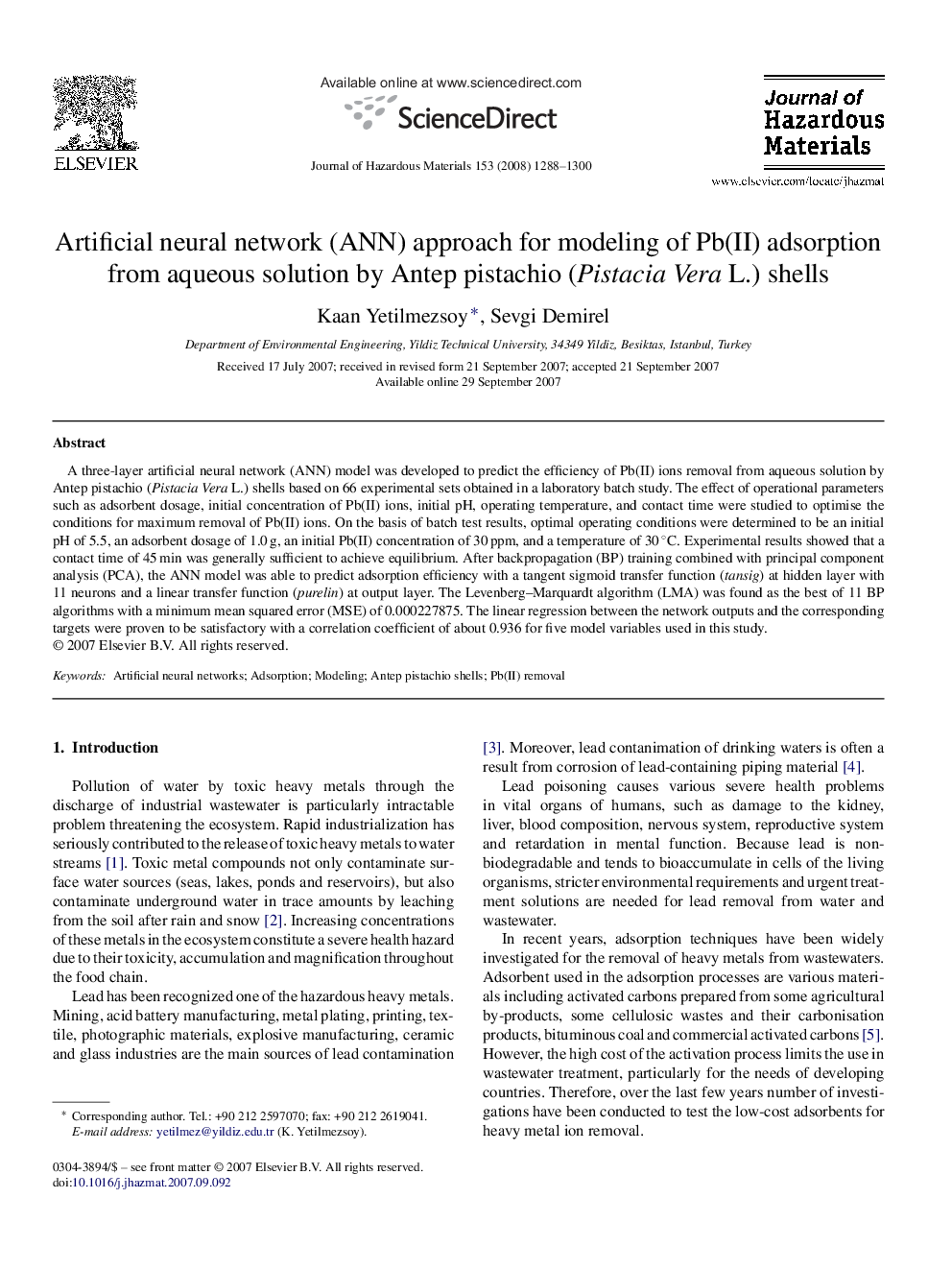| Article ID | Journal | Published Year | Pages | File Type |
|---|---|---|---|---|
| 583069 | Journal of Hazardous Materials | 2008 | 13 Pages |
Abstract
A three-layer artificial neural network (ANN) model was developed to predict the efficiency of Pb(II) ions removal from aqueous solution by Antep pistachio (Pistacia Vera L.) shells based on 66 experimental sets obtained in a laboratory batch study. The effect of operational parameters such as adsorbent dosage, initial concentration of Pb(II) ions, initial pH, operating temperature, and contact time were studied to optimise the conditions for maximum removal of Pb(II) ions. On the basis of batch test results, optimal operating conditions were determined to be an initial pH of 5.5, an adsorbent dosage of 1.0 g, an initial Pb(II) concentration of 30 ppm, and a temperature of 30 °C. Experimental results showed that a contact time of 45 min was generally sufficient to achieve equilibrium. After backpropagation (BP) training combined with principal component analysis (PCA), the ANN model was able to predict adsorption efficiency with a tangent sigmoid transfer function (tansig) at hidden layer with 11 neurons and a linear transfer function (purelin) at output layer. The Levenberg-Marquardt algorithm (LMA) was found as the best of 11 BP algorithms with a minimum mean squared error (MSE) of 0.000227875. The linear regression between the network outputs and the corresponding targets were proven to be satisfactory with a correlation coefficient of about 0.936 for five model variables used in this study.
Related Topics
Physical Sciences and Engineering
Chemical Engineering
Chemical Health and Safety
Authors
Kaan Yetilmezsoy, Sevgi Demirel,
